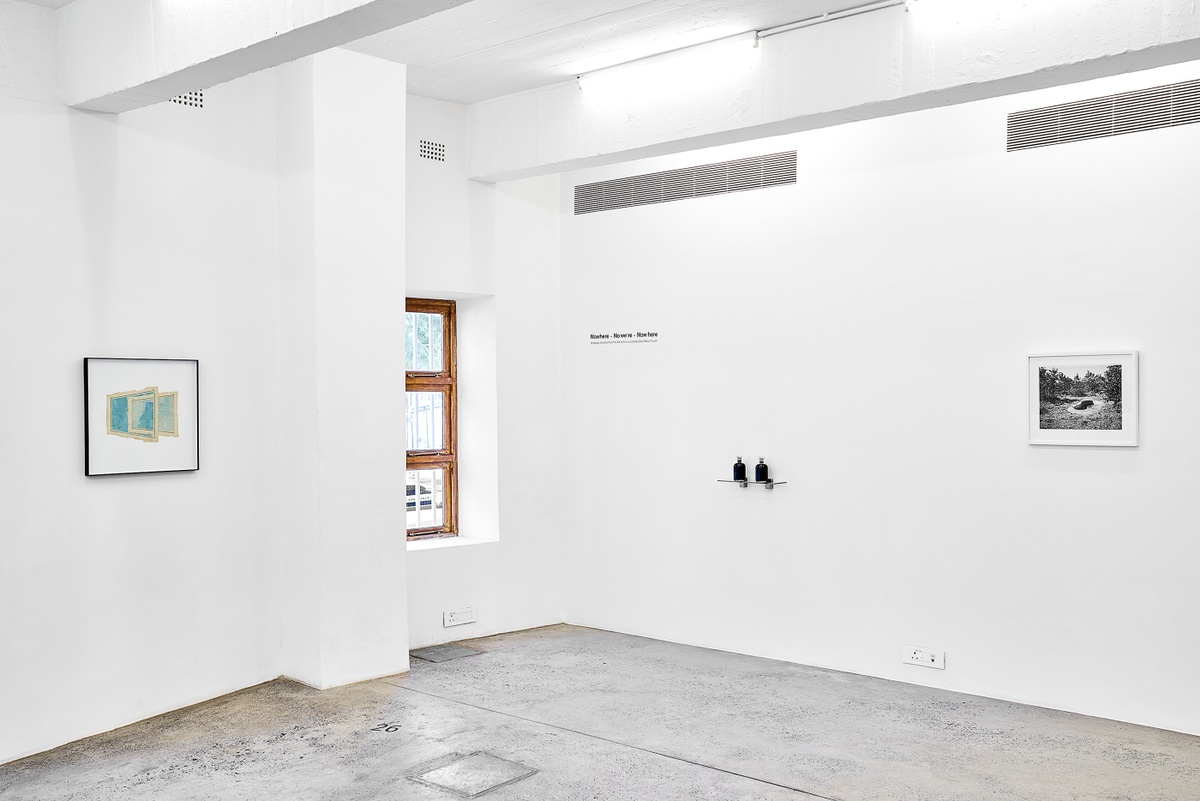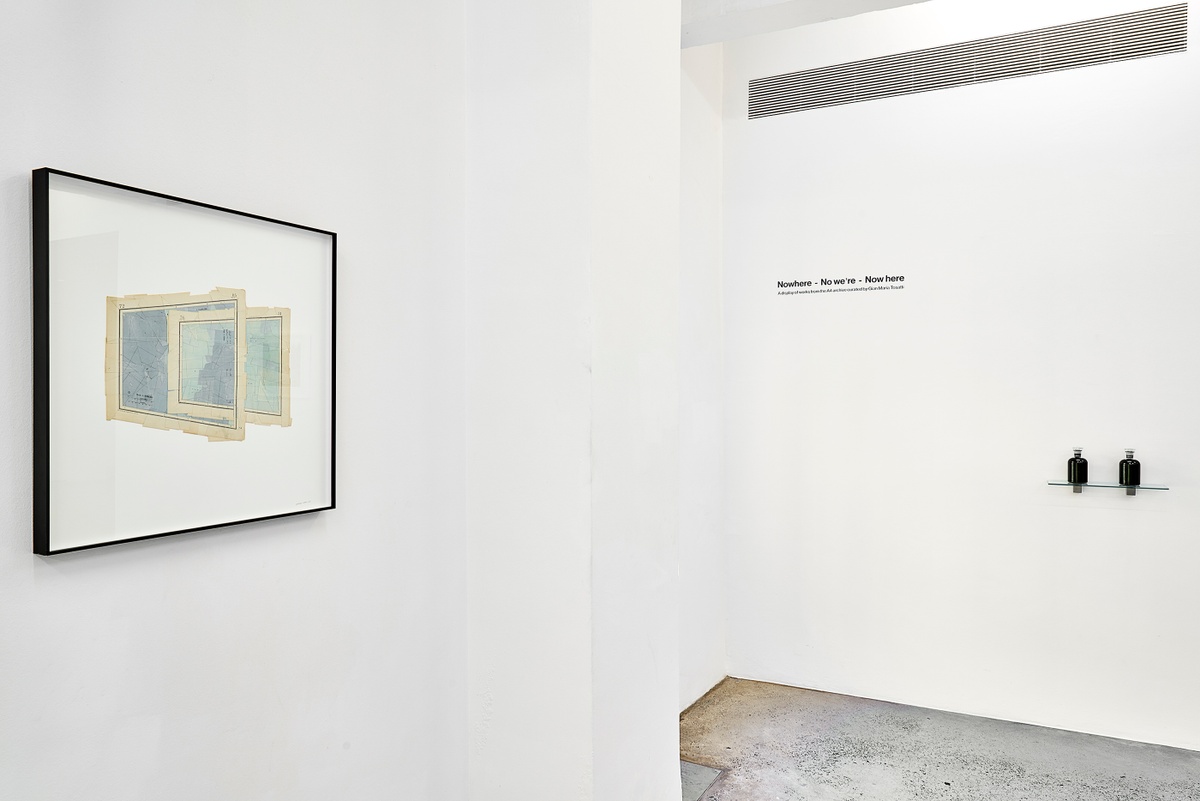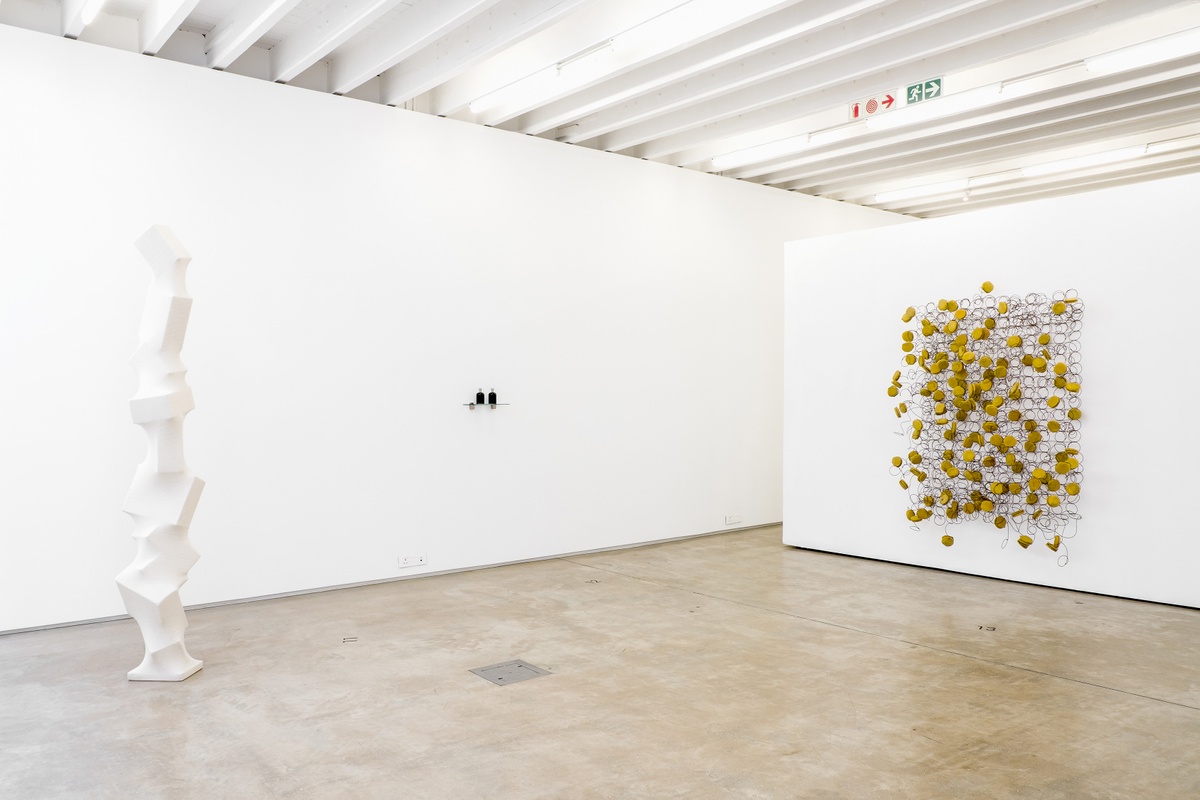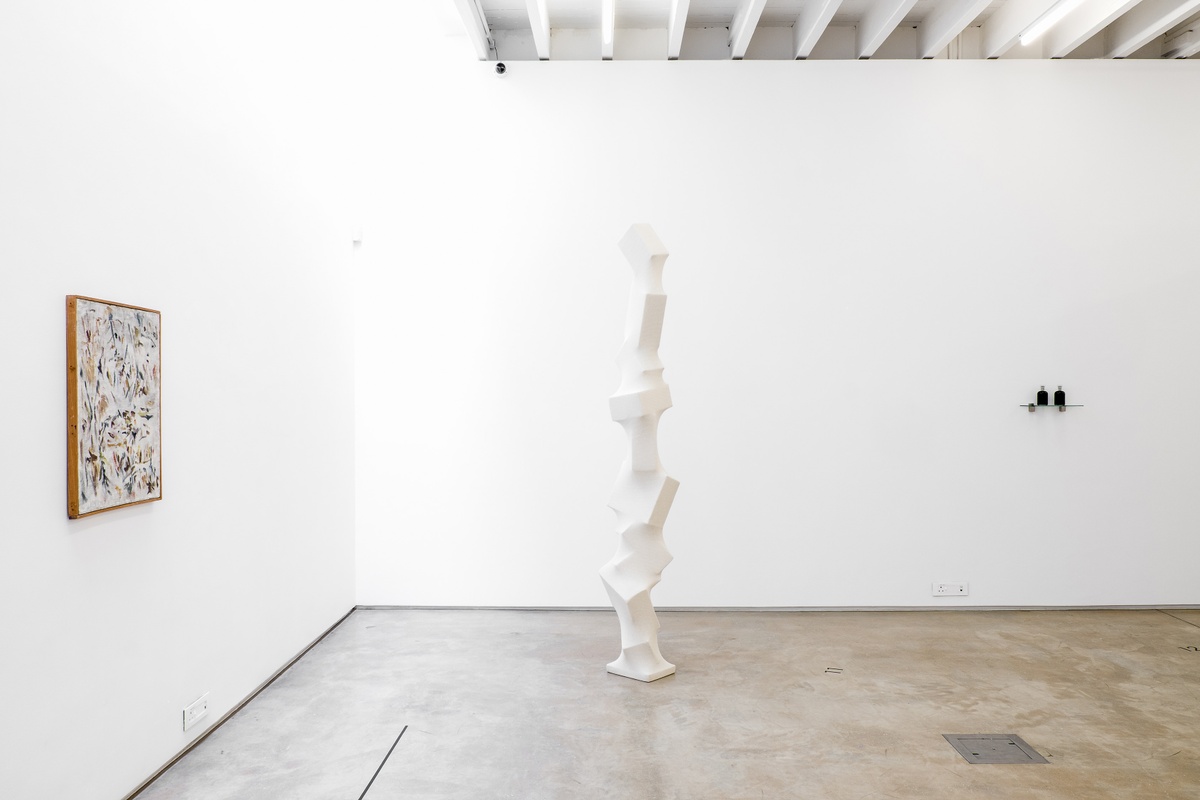James Webb
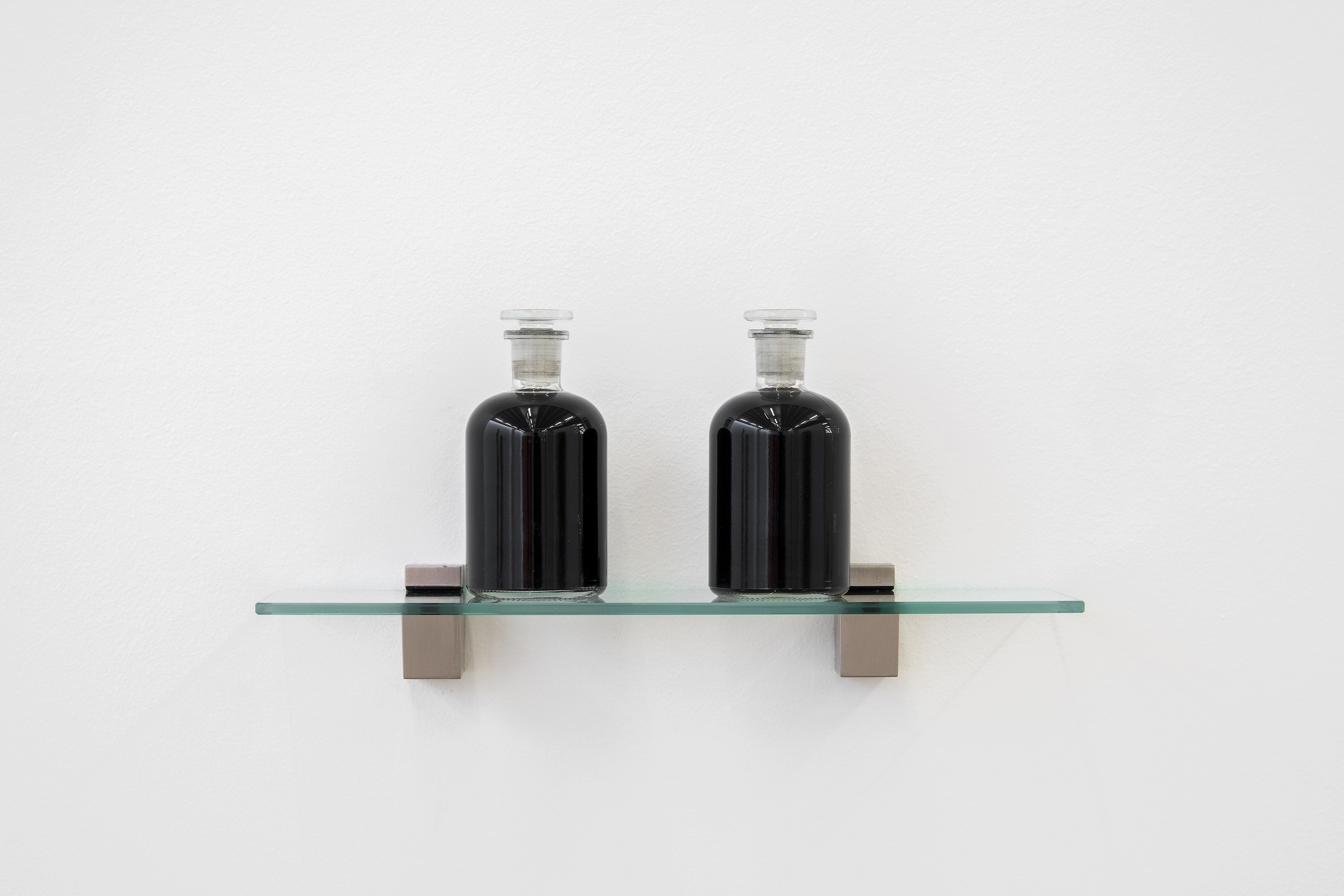
I do not live in this world alone, but in a thousand worlds (The Two Insomnias) is Sphinx-like in its silence. Its two identical vials alone reveal nothing of the fluid blackness they contain – water stained by the ink of a poem written on soluble paper (this recalled in the work's material list). The vials offer themselves to be drunk as potion or poison, their dark water “a tool of transmutation” – as if the sympathetic magic of the poem they contain might weave a spell, as if the words might be returned to the mouth that swallows them, that they might find expression in the consuming body.
When I am with you, we stay up all night.
When you’re not here, I can’t go to sleep.
Praise God for those two insomnias!
And the difference between them.
– Jalāl ad-Dīn Muhammad Rūmī
I do not live in this world alone, but in a thousand worlds (The Two Insomnias) was first shown at A4 in More for Less, an exhibition in the Gallery curated by Josh Ginsburg (February 9–May 27, 2018), and later in Nowhere - No we're - Now here (March 20–May 2, 2019), a selection of works from the foundation's archive in the Reading Room, curated by artist Gian Maria Tosatti during his residency at A4 in 2019.
b.1975, Kimberley
There is in James Webb's work a gestural eloquence in form and thought, a distillation of idea akin to haiku. While his primary medium is sound, the artist suggests that “listening and doing nothing” perhaps better describes his preoccupations. “Listening,” Webb says, “is a very hard thing to do. It’s about paying attention, and being open to the unknown.” Indeed, he is no stranger to the unknown, inviting such themes as the occult and spiritualism into his work. Attuned to the poetics of the ordinary and understated, his work draws attention to the numinous in the normal. With objects minimal and more often monochrome, Webb lends to his sounds a material housing. Some he allows to exist as only aural offerings – birds calling from trees, voices singing under bridges. Few remain silent yet are all the more compelling for their quiet. An unseen stranger coughs in the gallery, a voice directs a series of questions to five litres of Nigerian crude oil – “What do you remember of prehistoric sunlight?” – a microphone records its journey to the bottom of a mine shaft, a broken clock becomes obscure religious symbol.
